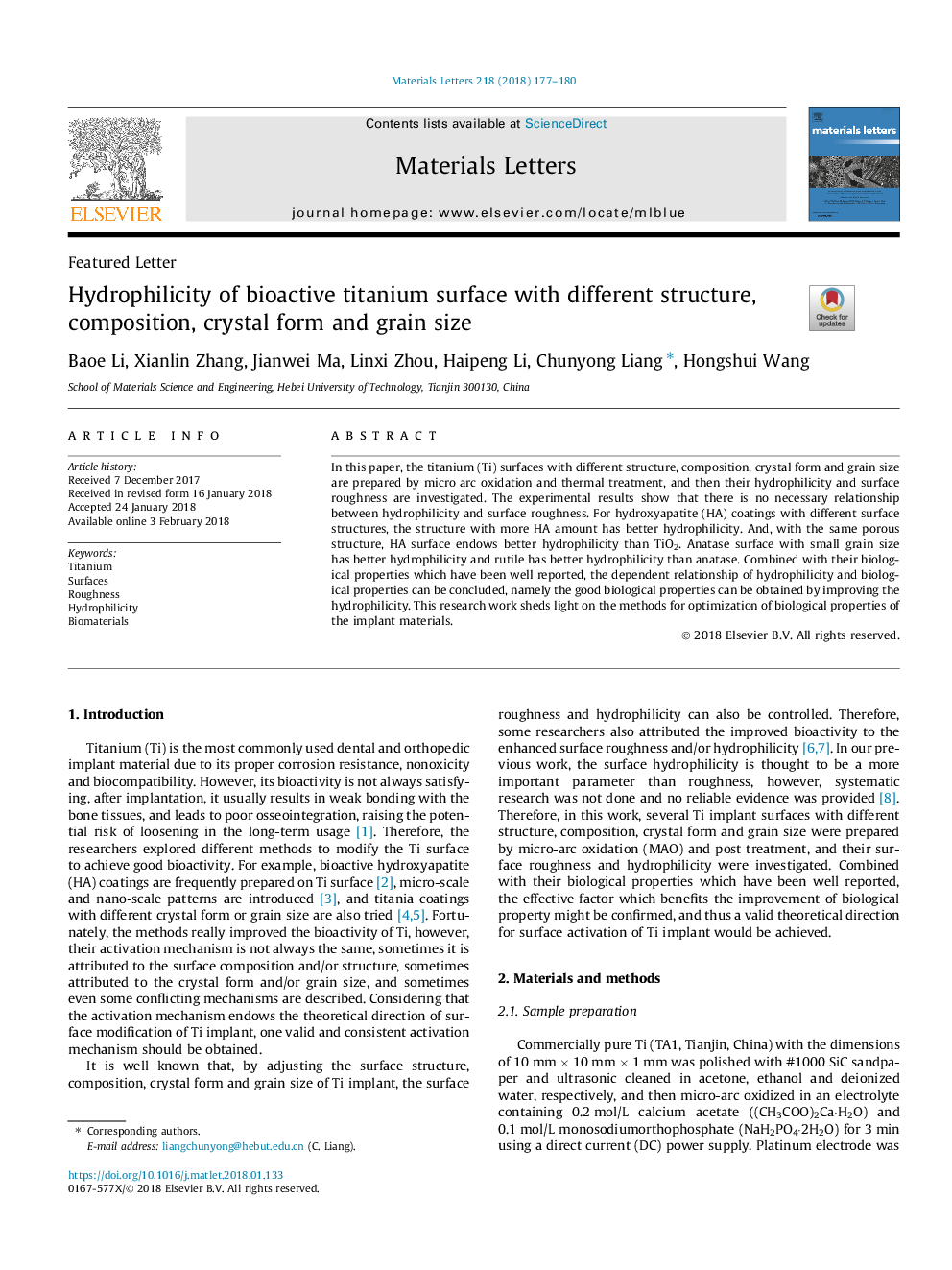| Article ID | Journal | Published Year | Pages | File Type |
|---|---|---|---|---|
| 8014037 | Materials Letters | 2018 | 4 Pages |
Abstract
In this paper, the titanium (Ti) surfaces with different structure, composition, crystal form and grain size are prepared by micro arc oxidation and thermal treatment, and then their hydrophilicity and surface roughness are investigated. The experimental results show that there is no necessary relationship between hydrophilicity and surface roughness. For hydroxyapatite (HA) coatings with different surface structures, the structure with more HA amount has better hydrophilicity. And, with the same porous structure, HA surface endows better hydrophilicity than TiO2. Anatase surface with small grain size has better hydrophilicity and rutile has better hydrophilicity than anatase. Combined with their biological properties which have been well reported, the dependent relationship of hydrophilicity and biological properties can be concluded, namely the good biological properties can be obtained by improving the hydrophilicity. This research work sheds light on the methods for optimization of biological properties of the implant materials.
Related Topics
Physical Sciences and Engineering
Materials Science
Nanotechnology
Authors
Baoe Li, Xianlin Zhang, Jianwei Ma, Linxi Zhou, Haipeng Li, Chunyong Liang, Hongshui Wang,
